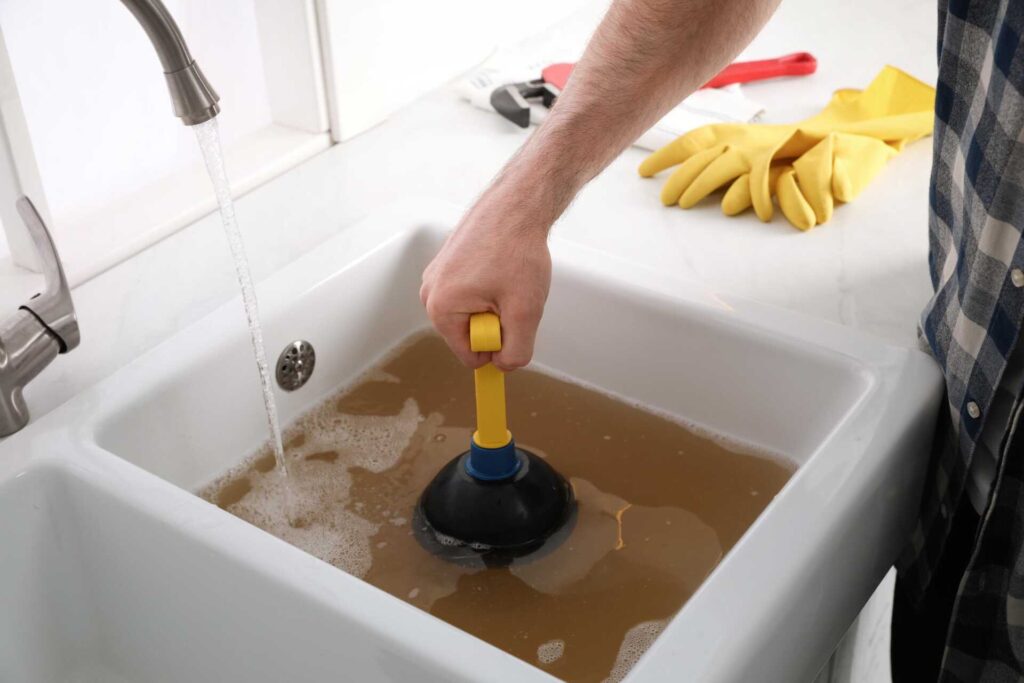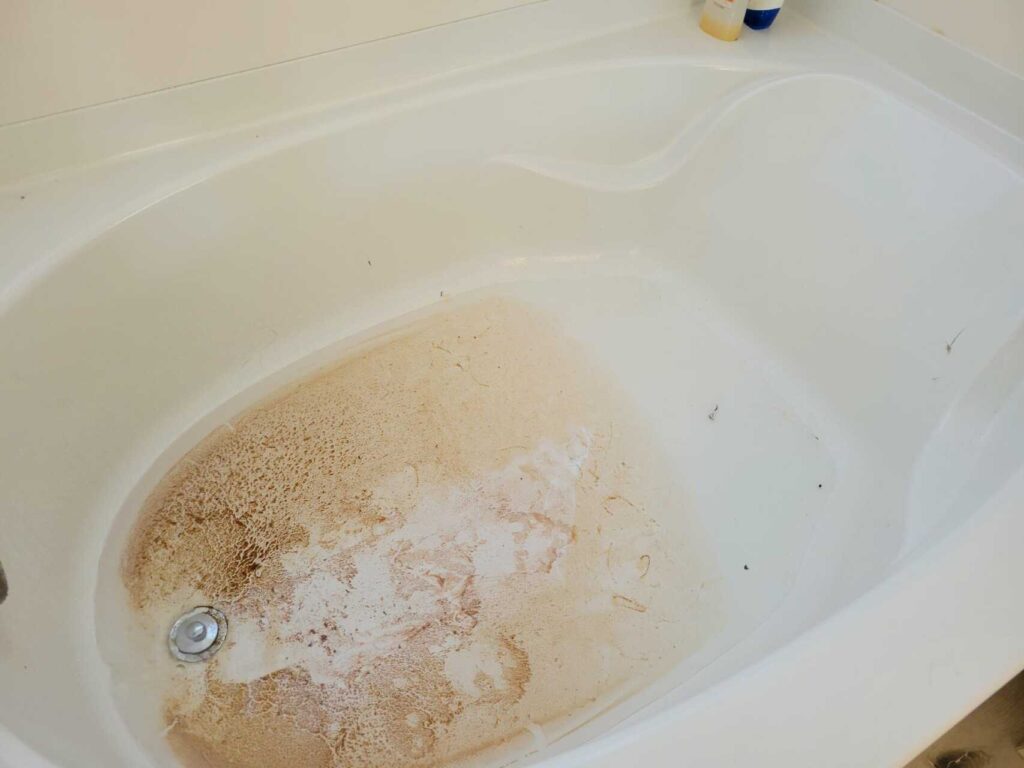
Contents
You might find it a coincidence that a simple kitchen ingredient could save you money on drain cleaning. If you’re facing recurring clogs, it’s important to explore budget-friendly options that don’t break the bank. From effective DIY methods to affordable professional services, you have more choices than you might think. Understanding these alternatives can help you maintain your plumbing without overspending, but which methods are truly effective and safe? Let’s uncover some practical strategies that can keep your drains flowing smoothly while keeping your wallet happy.
Key Takeaways
- Utilize home remedies like baking soda and vinegar for effective, cost-free drain cleaning solutions.
- Consider affordable professional packages that cater to various budgets and offer comprehensive services.
- Employ DIY techniques such as boiling water and salt to prevent and address clogs without extra costs.
- Research local plumbing services for discounts, loyalty programs, and competitive pricing for drain cleaning.
- Regular maintenance practices can save money by preventing major plumbing issues and extending the life of your pipes.
Home Remedies for Clogs
When you’re dealing with stubborn clogs, you don’t always need to reach for harsh chemicals; instead, consider some effective home remedies. Natural clog remedies often utilize common household items, making them an accessible solution for anyone looking to clear a blocked drain without breaking the bank.
One popular method involves using baking soda and vinegar. Start by pouring about half a cup of baking soda directly into the clogged drain. Follow this by adding half a cup of vinegar. You’ll notice fizzing as the two react, which helps to break down grease and debris. After about 30 minutes, flush the drain with hot water to clear away any remaining residue.
Another effective remedy is using salt and hot water. Simply pour about half a cup of salt down the drain, followed by boiling water. The salt acts as a natural abrasive, helping to dislodge any buildup. This method is particularly useful for kitchen sinks.
If you prefer a more manual approach, a plumber’s snake can be a handy tool. It’s not a harsh chemical but rather a physical solution that can help you reach deeper clogs without damaging your pipes.
Affordable Professional Services
While tackling stubborn clogs can often be a DIY endeavor, sometimes it’s wise to seek out affordable professional services. When you’re dealing with persistent issues that home remedies can’t resolve, hiring a professional can save you both time and frustration. Many plumbing companies understand the importance of affordability and offer service packages designed to fit various budgets.
These service packages often include a thorough drain inspection, utilizing advanced tools like video cameras to pinpoint the problem. By opting for these packages, you gain insight into your plumbing system’s health without breaking the bank. Look for companies that advertise affordable rates, ensuring you’re getting quality service at a price that won’t strain your finances.
Moreover, professional services can often tackle multiple issues in one visit. For instance, if you’re experiencing slow drains throughout your home, a professional can address all of them at once, potentially saving you money. They also come equipped with specialized tools that can handle tougher clogs more efficiently than most DIY methods.
Additionally, many companies offer loyalty programs or discounts for first-time customers. This can provide further savings while building a relationship with a trusted service provider. By choosing affordable professional services, you resolve your plumbing issues and join a community of homeowners who prioritize effective, budget-friendly solutions. So when clogs become overwhelming, remember that professional help is just a call away.
DIY Drain Cleaning Techniques
When your drains are clogged, you can effectively tackle the issue with simple DIY techniques. Using a combination of baking soda and vinegar, boiling water, or a plunger can clear most minor blockages. These methods are not only cost-effective but also easy to implement.
Baking Soda and Vinegar
One of the most effective and budget-friendly DIY drain cleaning techniques involves the powerful combination of baking soda and vinegar. This duo helps clear clogs and offers numerous baking soda benefits, such as deodorizing your drains and breaking down grease.
To start, pour about half a cup of baking soda down your drain. This will target any buildup of debris. Next, follow it with half a cup of vinegar. The vinegar reactions with baking soda create a fizzing action that helps dislodge stubborn blockages. It’s important to let this mixture sit for about 30 minutes, allowing the reaction to work its magic.
After the waiting period, flush your drain with hot water to wash away any remaining debris. This method is safe for most types of plumbing and is a great way to maintain your drainage system without harsh chemicals. Plus, you’ll appreciate how easy and affordable it is to keep your drains running smoothly. Embracing this simple yet effective technique not only saves money but also fosters a sense of community care for your home’s well-being.
Boiling Water Method
The boiling water method is a straightforward and effective technique for clearing minor clogs in your drains. This method leverages the heat and fluidity of boiling water to dissolve grease and debris, making it a popular choice among DIY enthusiasts. Here are some key steps and considerations:
- Boil Water: Heat a pot of water until it reaches a rolling boil.
- Pour Cautiously: Slowly pour the boiling water down the clogged drain to avoid splashing.
- Repeat: If necessary, repeat the process a couple of times for tougher blockages.
- Flush with Cold Water: Follow up with cold water to help solidify any remaining debris.
The boiling water benefits include being inexpensive and chemical-free, making it an eco-friendly option. However, be aware of boiling water risks, such as damaging PVC pipes if the water is too hot or pouring too quickly. Always verify your pipes can handle high temperatures before using this method. By incorporating the boiling water method into your drain maintenance routine, you can keep clogs at bay without breaking the bank.
Plunger Techniques
After utilizing the boiling water method, you might find yourself needing a more hands-on approach for stubborn clogs. Plungers are your go-to tools for this task, and understanding the different plunger types can make all the difference. The standard cup plunger is best for sinks and tubs, while the flange plunger, with its extended rubber rim, is ideal for toilets.
To begin effective plunging, ensure the plunger forms a tight seal over the drain. If you’re dealing with a sink or tub, fill it with enough water to cover the plunger’s cup. For toilets, you’ll want the bowl to be about half full. Now, create a strong and consistent up-and-down motion, maintaining that seal. It might take several attempts, but don’t give up too soon!
If the clog starts to loosen, you’ll feel a drop in resistance. This is a sign that your efforts are working. After you’ve successfully cleared the drain, flush it with hot water to ensure everything is flowing smoothly. With these plunger techniques in your toolkit, you’ll feel empowered to tackle almost any clog that comes your way.
Chemical Solutions to Consider
When facing stubborn clogs, chemical solutions can offer an effective and budget-friendly approach to drain cleaning. You might be tempted to reach for harsh chemicals, but there are safer chemical alternatives that can help clear your drains while minimizing risks. Before you plunge in, it’s essential to keep safety precautions in mind. Always wear gloves and eye protection, and confirm the area is well-ventilated.
Here are four chemical solutions to reflect on:
Baking Soda and Vinegar: This natural duo can break down minor clogs. Pour half a cup of baking soda down the drain, followed by half a cup of vinegar. Let it fizz for about 30 minutes, then flush with hot water.
Dish Soap and Hot Water: For grease-based clogs, try pouring a cup of dish soap down the drain, followed by boiling water. This helps dissolve the grease and can clear the blockage.
Enzyme Cleaners: These biodegradable products use natural enzymes to break down organic matter. They’re safer for your plumbing and the environment, making them a great choice.
Store-bought Drain Cleaners: If you opt for commercially available products, read the labels carefully. Look for those labeled as safe for pipes, and always follow the manufacturer’s instructions.
Importance of Regular Maintenance
Regular maintenance not only prevents clogs but also extends the lifespan of your plumbing system. By implementing a proper maintenance schedule, you can catch potential issues before they escalate into costly repairs. Taking these preventative measures is essential for maintaining a healthy plumbing system and ensuring that your home runs smoothly.
When you routinely check for signs of wear or blockage, you’re actively protecting your investment. Simple practices, like regularly cleaning drains and inspecting pipes, can save you from the inconvenience and expense of emergency plumbing services. You’ll find that being proactive rather than reactive provides peace of mind and fosters a sense of community among homeowners who prioritize their home’s upkeep.
Creating a maintenance schedule allows you to be systematic about your plumbing care. Set reminders for seasonal inspections, where you can clear out debris, check for leaks, and confirm that your drainage system is functioning effectively. This not only keeps your drains flowing freely but also enhances the overall efficiency of your plumbing system.
Additionally, involving family members in these maintenance tasks can foster a sense of belonging and responsibility. It’s a great way to teach everyone the importance of home care while bonding over shared responsibilities.
Eco-Friendly Cleaning Options
If you’re looking for eco-friendly options to clean your drains, consider using vinegar and baking soda. This combination creates a powerful reaction that helps break down clogs without harmful chemicals. Enzyme-based cleaners also provide a natural solution by using biological processes to digest organic waste in your pipes.
Vinegar and Baking Soda
Vinegar and baking soda are powerful, eco-friendly alternatives for drain cleaning that you can easily use at home. These two household staples help eliminate clogs and offer numerous vinegar benefits, like deodorizing and disinfecting your drains.
Here’s a simple method to get started:
- Measure: Pour 1 cup of baking soda down the drain.
- Add: Follow with 1 cup of vinegar. You’ll notice fizzing as they react.
- Wait: Let the mixture sit for about 15-30 minutes. This allows it to break down buildup effectively.
- Rinse: Flush the drain with hot water to clear out any remaining debris.
Using vinegar and baking soda is cost-effective and safe for your plumbing and the environment. It’s a great way to maintain your drains while being mindful of eco-friendliness. Plus, you’re part of a community that values sustainable living. So next time you face a slow drain, reach for these common kitchen items. You’ll feel good knowing you’re making a responsible choice!
Enzyme-Based Cleaners
While traditional chemical cleaners can be harsh on both your plumbing and the environment, enzyme-based cleaners offer a safe and effective alternative for drain maintenance. These cleaners utilize naturally occurring enzymes to break down organic materials like grease, hair, and food particles. You’ll find that their enzyme effectiveness not only clears clogs but also prevents future buildup, making them a smart choice for ongoing maintenance.
One of the biggest advantages of enzyme-based cleaners is their minimal environmental impact. Unlike harsh chemicals, these products are biodegradable and non-toxic, ensuring that your plumbing system and local waterways remain unharmed. They’re particularly beneficial for households with pets and young children, as they pose no risk of chemical exposure.
When using enzyme cleaners, consistency is key. Regular application can markedly improve your drain’s functionality while keeping your home safe and eco-friendly. Plus, many options are budget-friendly, allowing you to maintain a clean drain without breaking the bank. By choosing enzyme-based cleaners, you’re not just investing in your plumbing; you’re also contributing to a healthier planet for everyone.
Cost-Effective Equipment for Homeowners
When dealing with clogged drains, having the right equipment can make all the difference in achieving a quick and cost-effective solution. Investing in essential plumbing tools can save you time and money, allowing you to handle minor clogs without the need for professional help. Here are four cost-effective tools every homeowner should consider:
Drain Snakes: These flexible tools are designed to navigate through pipes and dislodge stubborn blockages. They’re affordable and effective, making them a must-have for any DIY homeowner.
Plunger: A classic plumbing tool, a plunger can quickly relieve minor clogs in sinks, toilets, and tubs. A high-quality plunger with a flange provides better suction and efficiency.
Pipe Wrench: This versatile tool allows you to grip and turn pipes, making it easier to remove or tighten fittings. Having a pipe wrench on hand can help you tackle various plumbing tasks beyond just drain cleaning.
Wet/Dry Vacuum: If you’re facing larger messes, a wet/dry vacuum can be a lifesaver. It can suck up debris and water, helping to clear out clogged drains effectively.
When to Call a Specialist
Even with the right tools at your disposal, some drain issues may be beyond your DIY capabilities. Recognizing the signs needing a specialist can save you time and prevent further damage. If you’re dealing with persistent clogs that reoccur even after multiple attempts to clear them, it’s time to call in the experts. This could indicate a more severe underlying issue, such as tree root intrusion or a collapsed pipe.
Another clear sign is if you notice multiple drains in your home backing up simultaneously. This often points to a blockage in the main sewer line, which typically requires professional drain inspection. Don’t overlook any foul odors emanating from your drains, as this could suggest a serious problem that needs immediate attention.
If you’ve attempted various home remedies without success, it’s wise to consult a specialist. They have access to advanced tools and techniques that can effectively diagnose and resolve complex drainage issues. Relying solely on DIY methods might lead to bigger problems down the line, incurring higher repair costs.
Finally, if you’re unsure about the severity of your drain issue, it’s better to err on the side of caution. A professional can provide peace of mind, ensuring your plumbing system functions efficiently. Remember, when it comes to your home, it’s important to know when to seek help and maintain a safe and healthy environment for you and your family.
Comparing Service Provider Prices
How can you ensure you’re getting the best value for your drain cleaning needs? One effective way is to conduct thorough service provider comparisons. By examining various companies, you can uncover pricing variations that may greatly impact your budget. Here are four steps to help you navigate this process:
Research Local Providers: Start by compiling a list of local drain cleaning services. Online reviews and community feedback can give you insights into their reputation and reliability.
Request Quotes: Don’t hesitate to contact multiple service providers to request quotes. Make sure to inquire about their pricing structures and any potential additional fees.
Evaluate Services Offered: Compare what each provider includes in their pricing. Some may offer extensive packages that cover more than just basic drain cleaning, such as preventative maintenance or follow-up inspections.
Check for Discounts or Promotions: Many companies run seasonal promotions or offer discounts for first-time customers. Be sure to ask if any savings are available to help lower your overall costs.
Recap
Tackling drain issues doesn’t have to break the bank. You can keep your plumbing system running smoothly without sacrificing your budget by exploring home remedies, DIY techniques, and affordable professional services. Isn’t it better to invest a little time or money now rather than face a costly disaster later? Regular maintenance and eco-friendly options can further enhance your savings. Remember, a small effort today can prevent a major headache tomorrow.



